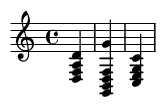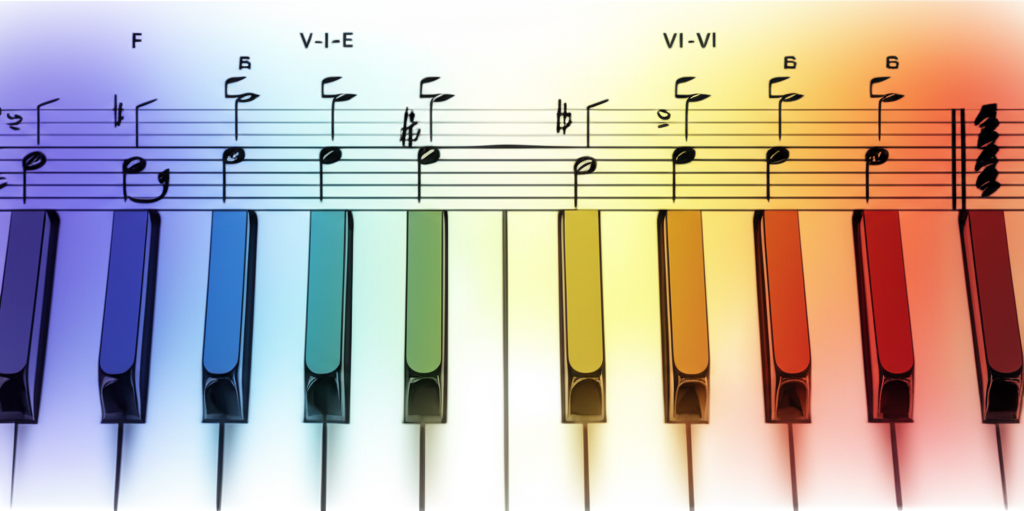The Andalusian Cadence (Am-G-F-E): A Deep Dive into This Iconic Chord Progression
What is the Andalusian Cadence?


The Andalusian Cadence is a descending chord progression typically written as Am-G-F-E in modern notation. This four-chord sequence creates a distinctive melancholic yet powerful sound that has been used for centuries across various musical genres.
In Roman numeral analysis (in A minor), the progression is:
- i (A minor)
- VII (G major)
- VI (F major)
- V (E major)
Historical Context and Musical Significance
This progression originated in Andalusia, Spain, and forms the harmonic foundation of flamenco music. Its roots can be traced back to Moorish influences on Spanish music during the Middle Ages. The cadence became widely known in classical music through pieces like "Asturias" by Isaac Albéniz and was later adopted by jazz, rock, and pop musicians.
Technical Construction
Chord Formulas
- Am (i): A-C-E (minor triad)
- G (VII): G-B-D (major triad)
- F (VI): F-A-C (major triad)
- E (V): E-G#-B (major triad, using the harmonic minor's raised 7th)
Voice Leading
The progression features beautiful voice leading:
- The A (root of Am) moves to G (root of G)
- The C (3rd of Am) moves to B (3rd of G)
- The E (5th of Am) moves to D (5th of G)
- This pattern continues through the entire progression
Practical Applications
Classical Music Examples
The cadence appears in:
- "Asturias" by Isaac Albéniz
- Various works by Manuel de Falla
- Spanish guitar repertoire
Jazz and Popular Music
Modern applications include:
- "Hit the Road Jack" by Ray Charles
- "Stray Cat Strut" by Stray Cats
- Numerous pop and rock songs
Progressive Exercises
Level 1: Basic Progression
Practice the chord changes slowly on guitar or piano:
Am | G | F | E ||
Level 2: Adding Rhythm
Apply a flamenco-style rhythm pattern:
Am G F E x x x x x x x x
Level 3: Improvisation
Improvise melodies using A harmonic minor over the progression.
Common Variations
- Am7-G-F-E7 (adding 7ths)
- Am-G-F-E (with E major or E7)
- Transposed to other keys
- With added passing chords
Conclusion
The Andalusian Cadence remains one of music's most evocative progressions. Its timeless quality continues to inspire composers and performers across genres. Mastering this progression will significantly expand your harmonic vocabulary and understanding of musical tension and resolution.
Historical Context and Musical Significance
Emerging from Andalusia's flamenco traditions in the 18th century, the Andalusian Cadence (i–VII–VI–V) represents one of Western music's most enduring harmonic patterns. Its chromatic descent (A-G-F-E in A minor) creates inherent tension through modal mixture, borrowing the major V chord (E) from the parallel harmonic minor. Historically, it appears in classical works like Rodrigo's Concierto de Aranjuez (1939) and Renaissance villancicos. The progression's significance lies in its emotional potency – simultaneously evoking melancholy and resolution – making it a cornerstone of modal harmony. Its cyclical nature facilitates improvisation, while the descending tetrachord structure connects it to ancient Greek and Baroque lament bass traditions.
Progressive Exercises
Beginner
Practice the basic progression in A minor using open chords: Am (x02210), G (320003), F (133211), E (022100). Strum each chord for 4 beats at 60 BPM. Focus on smooth transitions: isolate Am→G and F→E changes first. Use a metronome to maintain steady rhythm.
Intermediate
Incorporate fingerstyle patterns: Assign thumb to bass notes (A-G-F-E) while fingers pluck treble strings. Experiment with secondary dominants by replacing F with C7 (x32310) for jazzier flavor. Practice in different positions using barre chords: Am (577555), G (355433), F (133211), E (079980).
Advanced
Reharmonize using substitutions: Try Am(maj7)-Gmaj7-Fmaj7-E7#9. Create modal variations by treating E as Phrygian tonic. Compose a 16-bar piece alternating between standard cadence and relative major (C) key. Develop melodic motifs using A harmonic minor scale over the changes.
Ear Training Tips
Recognize the cadence's signature descending bass line by isolating root movement (A→G→F→E). Practice singing each root against drone tones. Key identification exercises: Listen for the shift from minor (Am) to major (E) tonal center. Recommended drill: Play I–VII–VI–V in random keys and identify roots. Analyze iconic recordings like "Hit the Road Jack" (Ray Charles) or "Runaway" (Del Shannon), pausing to identify chord qualities. Use apps like Functional Ear Trainer to isolate minor-to-major resolution. The cadence's "sighing" quality often signals emotional climaxes in ballads.
Common Usage in Different Genres
- Flamenco: Core progression for soleá and bulerías palos (styles), often with rasgueado strumming
- Classical: Debussy's "La Soirée dans Grenade" (impressionist adaptation)
- Rock: "Stairway to Heaven" intro (Led Zeppelin), "California Dreamin'" (The Mamas & The Papas)
- Pop: "I Will Survive" verse (Gloria Gaynor), "Save a Prayer" (Duran Duran)
- Metal: "Symphony of Destruction" chorus (Megadeth) in E minor
- Jazz: Often reharmonized as Dm7–G7–Cmaj7–B7#9 (e.g., Chick Corea's improvisations)
Online Resources
- 12tone's "Why Does This Chord Progression Work?" YouTube analysis
- Teoria.com's interactive chord progression exercises
- Hooktheory Database: Searchable catalog of cadence usage in popular music
